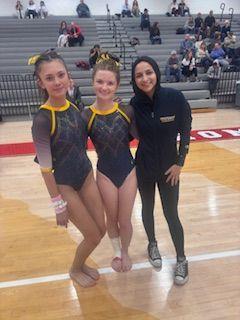Since the release of ChatGPT AI has only become more powerful, popular, and accessible. Despite that Loudoun County hasn’t released information to parents and students on their position with generative AI until now. Near the beginning of the second quarter, an official blog post gave new light into the district’s plan for the future of education technology.
The blog post, released earlier this quarter, covered a variety of different topics regarding AI and “generative AI.” The term AI signifies a computer doing a task a human would normally do, for example Autocorrect. Generative AI is more specific, being AI that learns to create completely new content in various forms such as text, images, or audio.
The blog mostly targets teachers, but provides new insights and information that applies to many students as well. In addition to information about AI and how to use it for work, the blog discussed the ability for teachers to give their students access to AI programs. “If you find a tool that you are interested in using with students, you must submit that tool for review,” the post read. Teachers that want to do this should contact the Instructional Facilitator, Technology, which at County is Kayla Urban.
The post also recommends teachers use turnitin.com to prevent academic dishonesty and catch students that cheat with AI. The district’s subscription to Turnitin gives teachers its guess of the percentage of AI content in writing that students turn in. It also warns teachers of problems with turnitin, stating, “AI detection tools are new, and do not accurately flag AI writing 100% of the time.”
Tests I ran revealed that turnitin.com was very poor at detecting AI content. I ran three sets of tests, and each test had three different pieces of writing that were run through the detector, totaling nine pieces of writing tested. In two of the three tests, one piece of writing was fully written by me, one piece of writing was partly by AI and partly human, and one piece was entirely AI. In the third test, all three were entirely generated by AI.
The detector only detected the presence of AI in three of the seven documents that contained AI, and likely saw any success at all because those pieces of writing had no attempt to hide the AI usage. When I asked chatGPT to try a different writing style or even add slight grammatical errors, the detector gave a rating of 0% AI even in the pieces of writing that were entirely AI.
Many teachers have become too comfortable swapping back to AI susceptible assignments, despite AI becoming more powerful than it was before. One of the few pieces of writing that the detector was able to find was an assignment dating to the prior school year from a student who was suspected to have used AI, and would have used an outdated version of chatGPT. Multiple new versions have been released since then, so the power and complexity has increased.
“I don’t recommend any AI detection tools. They’re all really bad. AI is evolving at a much more rapid rate than AI detection tools are, and their AI detection tools are just not going to beat it.” Urban said, “… focusing on whether or not students will cheat is the wrong concern. because there’s so much I that we need to be excited about for how AI can change and enhance education”




















